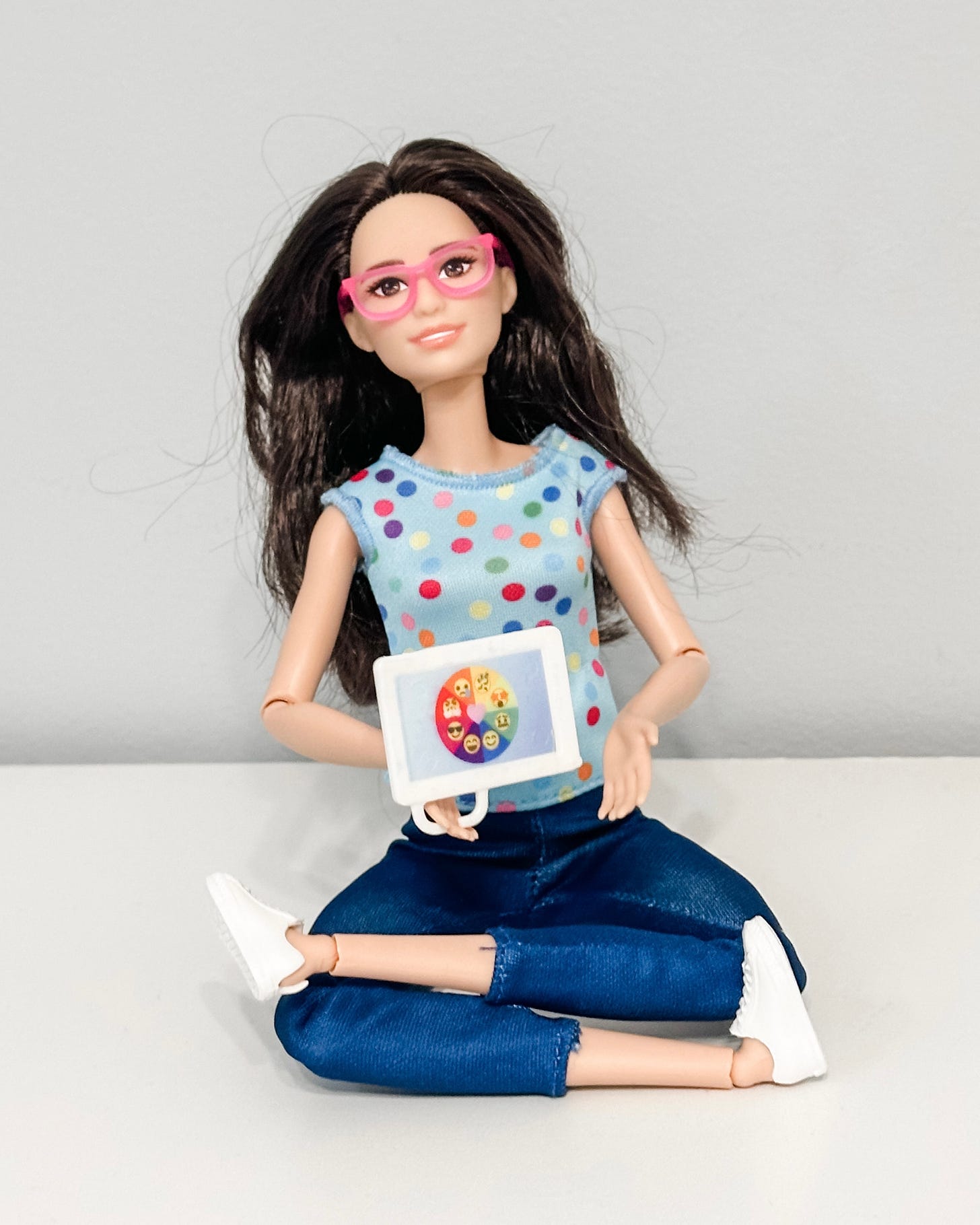My daughter turned six recently, and this week we went shopping together to spend the birthday money she’d been gifted by family and friends. She took her time, wandering the aisles with purpose, examining options and weighing possibilities in the way only a newly minted six-year-old can. And then, with a decisive nod, she placed a box into our cart.
It was the Barbie Art Therapy set.
Let me say that again: Barbie. Art. Therapy. Complete with a miniature easel, paint set, journals, and — the part that made my eyes sting with tears — a Barbie-sized feelings wheel.
You guys, a feelings wheel. For Barbie.
It stopped me in my tracks.
There are so many moments as a parent where you wonder: Am I doing enough? Am I doing this right? Is anything I’m trying to teach actually sticking?
And then my daughter picks out a toy that centers around emotional regulation and creative processing. A toy that literally exists to help children name, express, and move through their feelings. Not only does this make me want to write Mattel a thank you note, it also makes me pause in deep gratitude, and a little awe, that this is what my daughter gravitated toward.
I’ve spent years learning how to name my own feelings — in therapy, in writing, in the trenches of trauma and healing. Honestly, I’m still very much a work in progress when it comes to this. But helping my daughter find the language to do the same? That’s been one of the most sacred, rewarding parts of motherhood.
From the first time she noticed the accessed port on my chest and the IV medications I receive regularly, to the quiet moments when she’s curled up beside me and letting her tears fall because words were too hard — she’s been learning. Watching. Absorbing.
And now, she’s playing. Processing. Practicing.
Kids are already feeling all the big things — anxiety, sadness, frustration, joy, excitement, grief — sometimes all within the same hour. What they haven’t yet learned or developed is the language or the space to name those feelings. That’s where the real work comes in.
That’s where we as parents get to show up.
Where we first teach them how to co-regulate, and eventually, how to self-regulate. Where we don’t expect them to have all the answers — but we make sure, with intention and care, that the space we’ve built and the relationships we nurture are steady enough for them to fall apart when they need to… and to find their way back together again.
I never had a Barbie-sized feelings wheel growing up.
But my daughter does.
And if that’s not evidence of growth and hope and healing across generations, I don’t know what is.
So today, I just want to recognize that the tiny things aren’t actually tiny at all - like the toys that make space for emotional literacy, and the kids who are willing and able to learn it. I want to recognize the parents like me, like us, who, even in the midst of our hardest moments, are doing our best to raise humans who know how to feel and name their feelings, and maybe, just maybe, will grow up knowing how to carry them with a little more kindness towards themselves.
At the end of the day, I’m not sure there’s a greater gift I can offer my daughter than this: the ability to feel, name, and carry her emotions with compassion.






"At the end of the day, I’m not sure there’s a greater gift I can offer my daughter than this: the ability to feel, name, and carry her emotions with compassion." Yes, this is the greatest gift! Kudos to you for focusing on what matters most, preparing your daughter for a rich inner life.
You’re doing a wonderful job and it shows.